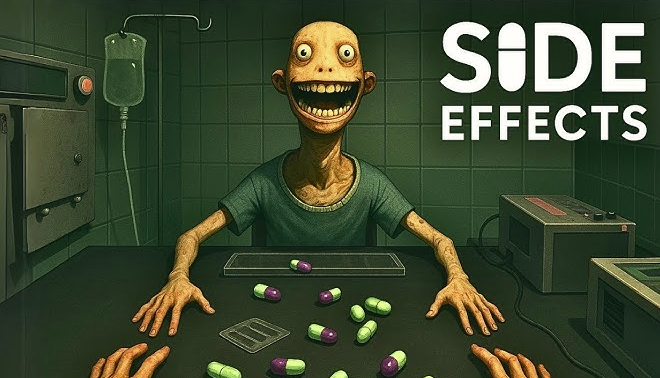
Side Effects Game
5/5 (1 Reviews)What Is Side Effects?
A Game of Cause and Chaos
In Side Effects, every move sets off a chain reaction. Players place tiles on a grid, each representing different elements or effects. These tiles interact with their neighbors in unique ways, often triggering unexpected results. It's a game where every action can have multiple consequences.
Designed for Thinkers
The game isn't just about placing tiles—it's about predicting and manipulating outcomes. With limited space and a growing complexity of interactions, players must think several steps ahead to avoid gridlock or unwanted effects.

Core Gameplay Mechanics
Matching and Reacting
Tiles are color-coded and may have unique icons or traits. When you place one tile next to another, they might merge, neutralize, or explode—depending on their properties. This creates a dynamic environment that constantly shifts with every turn.
Strategic Tile Placement
Unlike many puzzle games that focus on quick reflexes, Side Effects demands thoughtful placement. Some tiles offer positive effects like clearing nearby tiles, while others might “infect” surrounding areas. Planning how and where to place each tile is key to survival and success.
Features That Set It Apart
Randomized Tile Draw
Each game session is different, thanks to the randomized tile draw system. You never know what tile is coming next, keeping the gameplay fresh and challenging. This mechanic adds replayability and a bit of luck to every round.
Minimalist Yet Striking Design
The visual design of Side Effects is clean and modern, with a palette that’s easy on the eyes. Each tile has a distinct look, helping players quickly understand and react to what’s happening on the board.
Why Players Love It
Deep Yet Accessible
Side Effects has a low entry barrier, but mastering it takes time. The mechanics are easy to grasp, but the interactions between tiles grow more complex as the game progresses, offering a satisfying learning curve.
Perfect for Puzzle Fans
Fans of games like Tetris, Threes, or Triple Town will feel right at home with Side Effects. It’s a unique blend of logic, pattern recognition, and chaos management that keeps players coming back for more.
Whether you're after a quick brain teaser or a deep strategic challenge, Side Effects is an addictive puzzle experience worth playing.
























